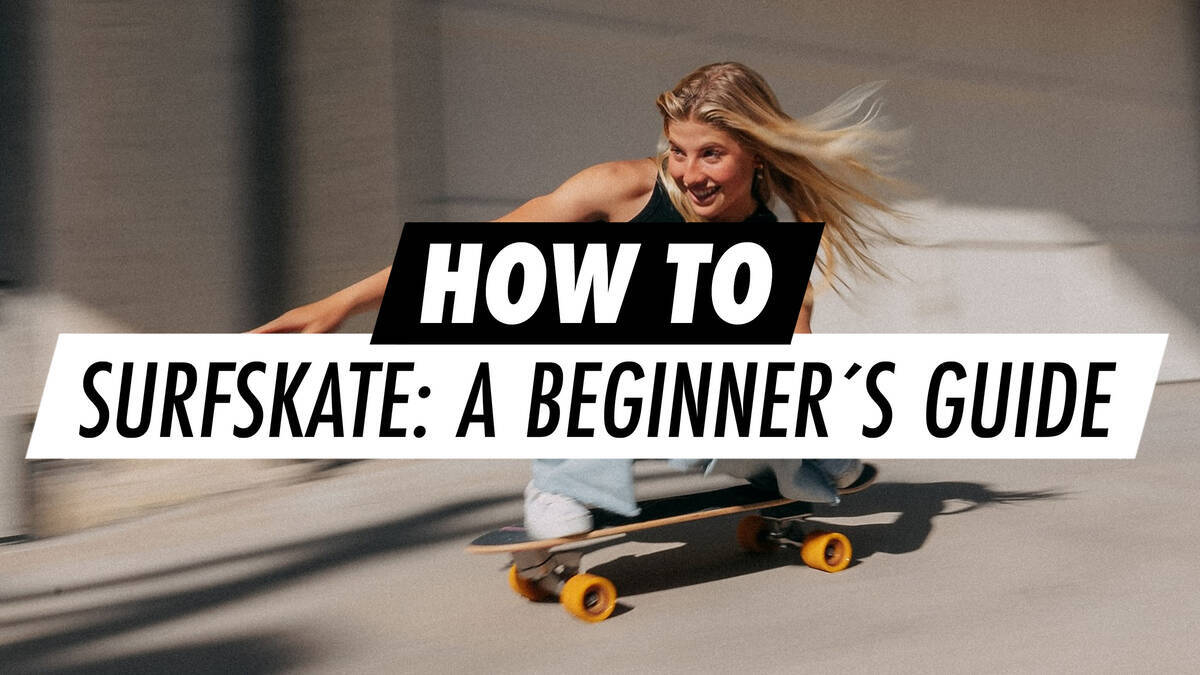Guide for Beginners: How to Surfskate

If stepping onto a surfskate is a new experience for you, this guide serves as an ideal starting point for understanding the essentials. You will learn to shift your weight to generate forward momentum without the need to push, unlike on a skateboard. Additionally, you will understand how to connect smooth turns and position your body for optimal control. These movements directly correspond to surfing techniques like “bottom turns” or “cutbacks”.
Surfskating offers a land-based practice for the fluid turns, body control, and balance familiar in surfing. It utilises a special surf skateboard with a front truck designed to pivot in a manner unlike a standard skateboard truck. Whether you're living far from the ocean or the water is calm, surfskating allows you to train your surf skills, enhance leg strength, and refine your timing.
Overview
Start Surfskating: Stance and Balance
Surfskate trucks are sensitive to even minimal shifts in foot positioning, feeling markedly different from regular skateboard or longboard trucks. Instead of using repetitive foot pushes, a single push is all that is needed to start moving. From that point forward, all forward movement arises from the surfskate pumping method.
Your stance is fundamental to all surfskating manoeuvres. Place your front foot just behind the front truck bolts, slightly pointing forward. Position your back foot over the rear truck, with toes angled more to the side. Keep knees bent, shoulders relaxed, and eyes looking towards your intended path. A balanced, low stance enables swift responses to changes in direction.
Learning to Pump for Speed on a Surfskate
In contrast to traditional skateboarding, gaining speed does not require foot pushing. Momentum is created by shifting your weight smoothly from heel to toe.
The “pumping” motion in surfskating consists of:
- Leaning into the turn by pressing through your toes.
- Synchronising the rotation of your shoulders and hips with the board.
- Extending your legs upon exiting the turn to produce forward propulsion.
Visualise drawing an S-shape on the ground, where each curve is an opportunity to increase speed and prepare for the next move.
Bottom & Top Turns
Bottom and Top Turns are fundamental to surfing, and a surfskate provides a unique opportunity to practice them.
The Bottom Turn is executed at the wave's base, redirecting the surfer towards the wave's highest point (also known as "The Lip"). The Top Turn happens near the lip, sending the surfer down the wave again.
Connecting these turns smoothly is the essence of fluid surfing. They occur repeatedly during a ride and are crucial for effective surfing.
Move forward, bend into your knees, and carve a deep turn to one side (Bottom Turn). Then rise into the next curve in the opposite direction (Top Turn). Uniting these turns results in a seamless path akin to gliding on an actual wave.
Stopping Strategies for Surfskating
As a surfskater, developing stopping techniques suited to the surfskate's distinct front truck system is important. If you are accustomed to dragging a shoe on a regular skateboard to stop, you might be surprised by how surfskate trucks respond.
In essence, surfskate trucks offer high agility, making carving and sharp turns effortless but necessitating a different approach for slowing down.
Thankfully, halting a surfskate is straightforward. Below are three safe and efficient methods to stop your board:
- Step Off Into a Run - When rolling at a low to moderate pace, step off first with your back foot and jog forward to absorb the momentum. Always look forward and select a clear landing zone.
- Grass or Rough Surface Stop - If possible, direct your surfskate onto grass or a rougher ground patch. The increased friction will decelerate you swiftly without stressing the trucks or wheels.
- Carve to Reduce Speed - Perform a series of wide, controlled turns to gradually decrease speed. This method is most effective when you have ample space and will not work in situations requiring an immediate stop.
By practising these methods, you'll gain confidence and remain in control of your surfskate at all times. Mastering stopping techniques early in your surfskating experience will grant you the freedom to practice turns, pumping, and other movements without the concern of slowing down.
